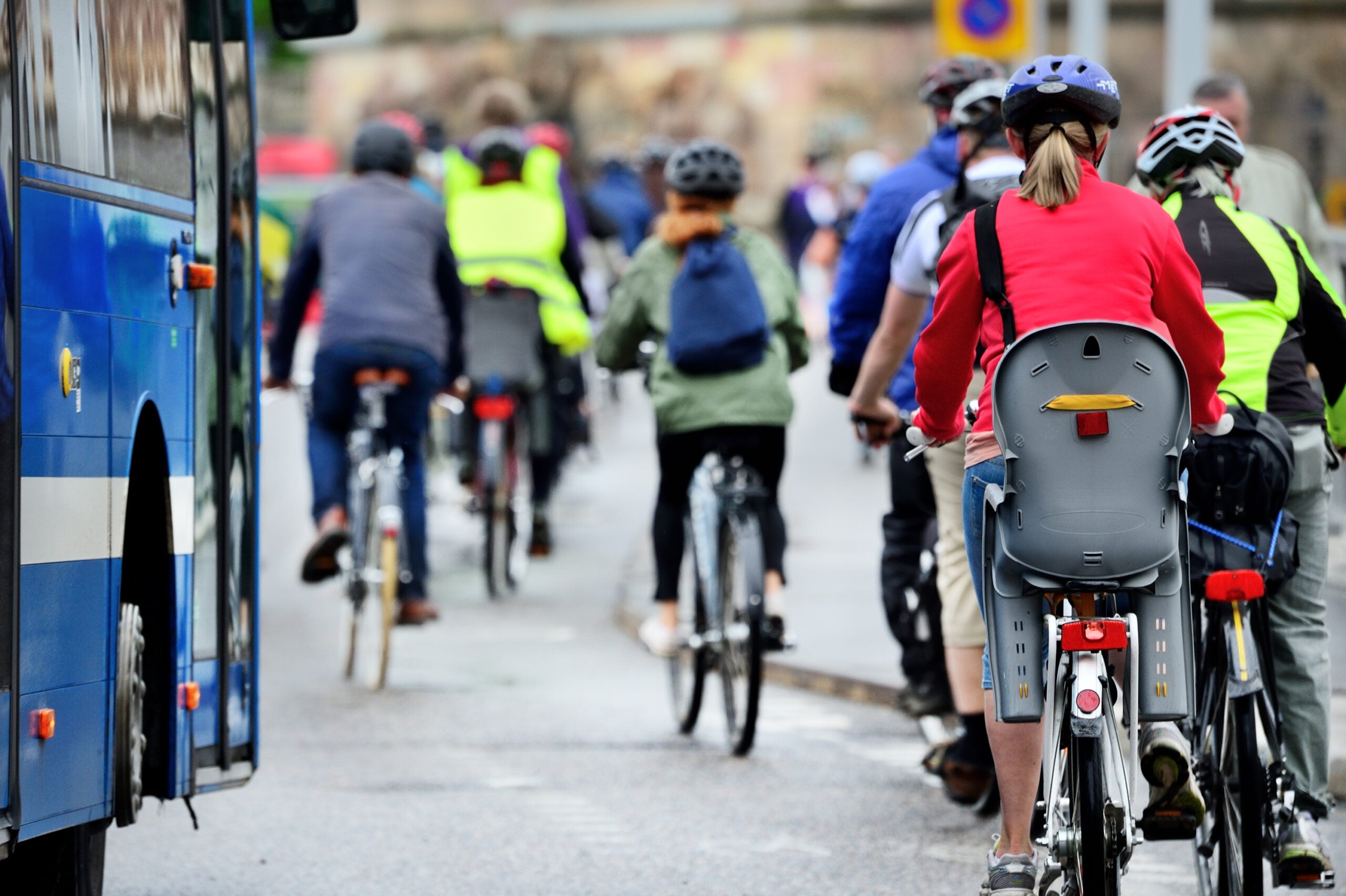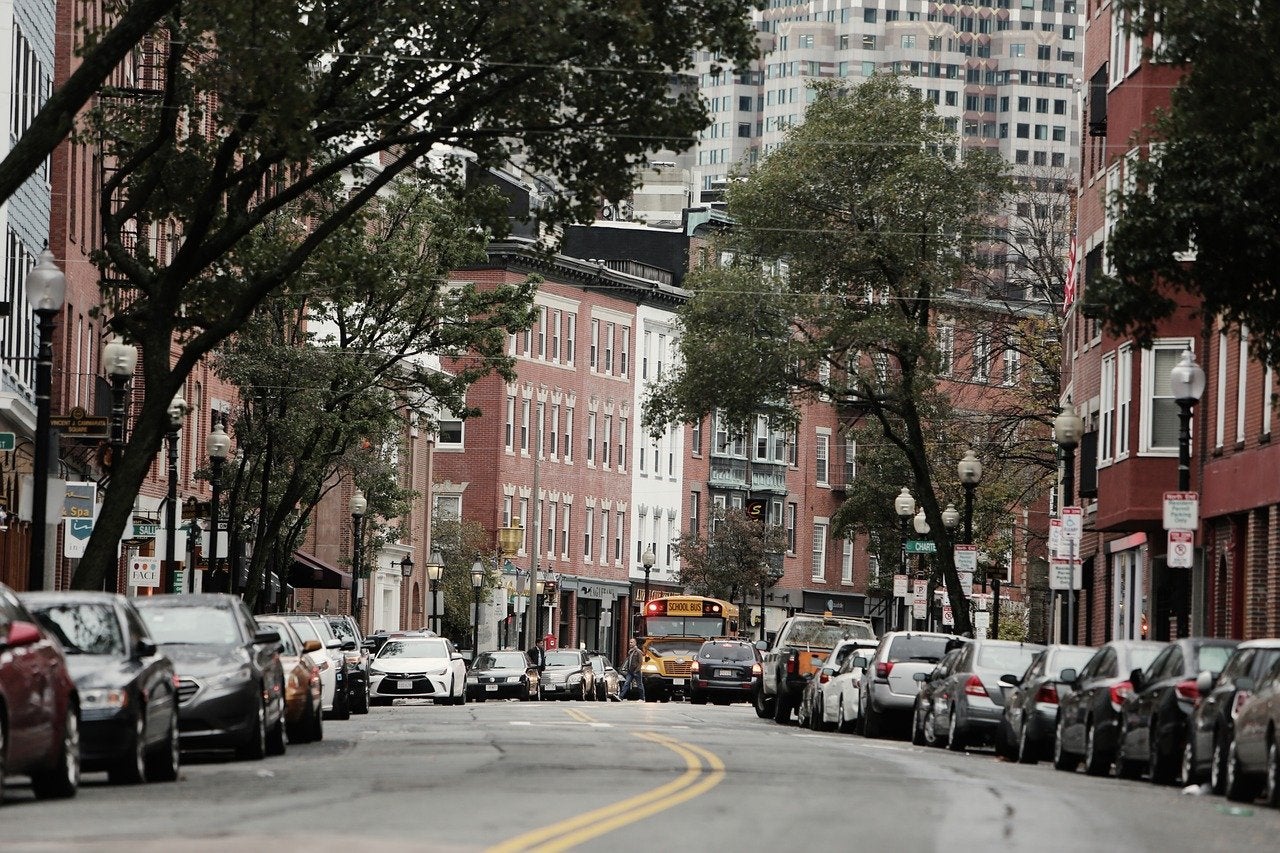Health-related savings from increased walking and bicycling far exceed the estimated infrastructure costs.
Subscribe to receive updates from the TRECH project
BOSTON – Investments in infrastructure to promote bicycling and walking could save as many as 770 lives and $7.6 billion each year across 12 northeastern states and the District of Columbia under the proposed Transportation and Climate Initiative (TCI), according to a new Boston University School of Public Health (BUSPH) and Harvard T.H. Chan School of Public Health study.
Published in the Journal of Urban Health, the analysis shows that the monetary benefit of lives saved from increased walking and cycling far exceed the estimated annual investment for such infrastructure, without even considering the added benefits of reducing air pollution and tackling climate change.
“Our study suggests that if all the states joined TCI and collectively invested at least $100 million in active mobility infrastructure and public transit, the program could save hundreds of lives per year from increased physical activity. These benefits are larger than the estimated air quality and climate benefits for the TCI scenarios, highlighting the importance of leveraging investments in sustainable active mobility to improve health,” says study lead author Matthew Raifman, a doctoral student in environmental health at BUSPH.
The TCI program, a partnership of 12 states and the District of Columbia currently under development, would implement a cap-and-invest program to reduce transportation sector emissions across the Northeast and Mid-Atlantic region, including substantial investment in cycling and pedestrian infrastructure as well as other sustainable transportation strategies like electric vehicle charging and public transit. In December, Massachusetts, Connecticut, Rhode Island, and D.C. became the first jurisdictions to formally join the TCI program.
Raifman and colleagues used an investment scenario model and the World Health Organization (WHO) Health Economic Assessment Tool methodology to estimate how many lives would be saved in each of the 378 counties in the Northeast and Mid-Atlantic regions thanks to increased physical activity (walking/running and cycling) and accounting for the potential for changes in traffic fatalities.
“These findings demonstrate how investments in climate-friendly transportation options like biking and walking can reap huge health and economic benefits at the local level,” says study senior author Dr. Patrick Kinney, Beverly A. Brown Professor for the Improvement of Urban Health at BUSPH.
The team analyzed nine scenarios that differed in their greenhouse gas emission caps as well as how the proceeds from the program would be invested across a range of transportation options. The scenario with the largest health benefits assumed a 25% reduction in greenhouse gas emissions, and investment of $632 million of the proceeds in cycling and pedestrian infrastructure across the 12 states and D.C. The researchers estimated that this scenario could save 770 lives region-wide due to reduced cardiovascular mortality, accounting for changes in pedestrian accident fatality rates. The monetary value of the reduced health risk is $7.6 billion per year.
Health benefits across the other scenarios roughly scaled with the degree of investment in pedestrian and cycling infrastructure. For example, a more modest scenario highlighted in the December 2020 TCI memorandum of understanding (MOU) would invest $130 million in cycling and pedestrian infrastructure, saving around 200 lives region-wide due to increased physical activity, with a monetary value of $1.8 billion. The four jurisdictions that signed the MOU thus far would see 16 lives saved each year from biking and walking under the MOU scenario, with a monetized value of $154 million, the researchers estimated.
The states with the largest estimated health benefits from active mobility under all policy scenarios are the populous states of New York, New Jersey, Pennsylvania, and Maryland.
“Investments in active mobility would not only increase physical activity but would also reduce air pollution levels and start to address the climate crisis. This study reinforces the importance of considering near-term health benefits when developing climate policy,” says study co-author Dr. Jonathan Levy, professor and chair of environmental health.
“Given the legacy of inequitable investment in infrastructure in the United States, the opportunity exists to address racial disparities in access to sidewalks and cycling infrastructure through equity-focused project siting,” Raifman says.
The study is part of the Transportation, Equity, Climate and Health (TRECH) Project, a multi-university research initiative independently analyzing TCI and other policy scenarios. TRECH is based at the Center for Climate, Health, and the Global Environment at Harvard T.H. Chan School of Public Health (Harvard Chan C-CHANGE).
“This study sheds light on potential health benefits from investments in biking and walking infrastructure. Actual outcomes will depend on how much funding exists and how it is invested. We hope this information is useful to policymakers and advocates as they consider how to best target transportation investments to gain greater and more equitable health benefits,” says study co-author Kathy Fallon Lambert, senior advisor at Harvard Chan C-CHANGE.
The TRECH Project is made possible in part by a grant from the Barr Foundation to the Center for Climate, Health, and the Global Environment at the Harvard T.H. Chan School of Public Health.
Read more about the key takeaways
Subscribe to receive updates from the TRECH project
Media Contacts:
Contact: Michelle Samuels, msamu@bu.edu
Contact: Anna Miller, amiller@hsph.harvard.edu












